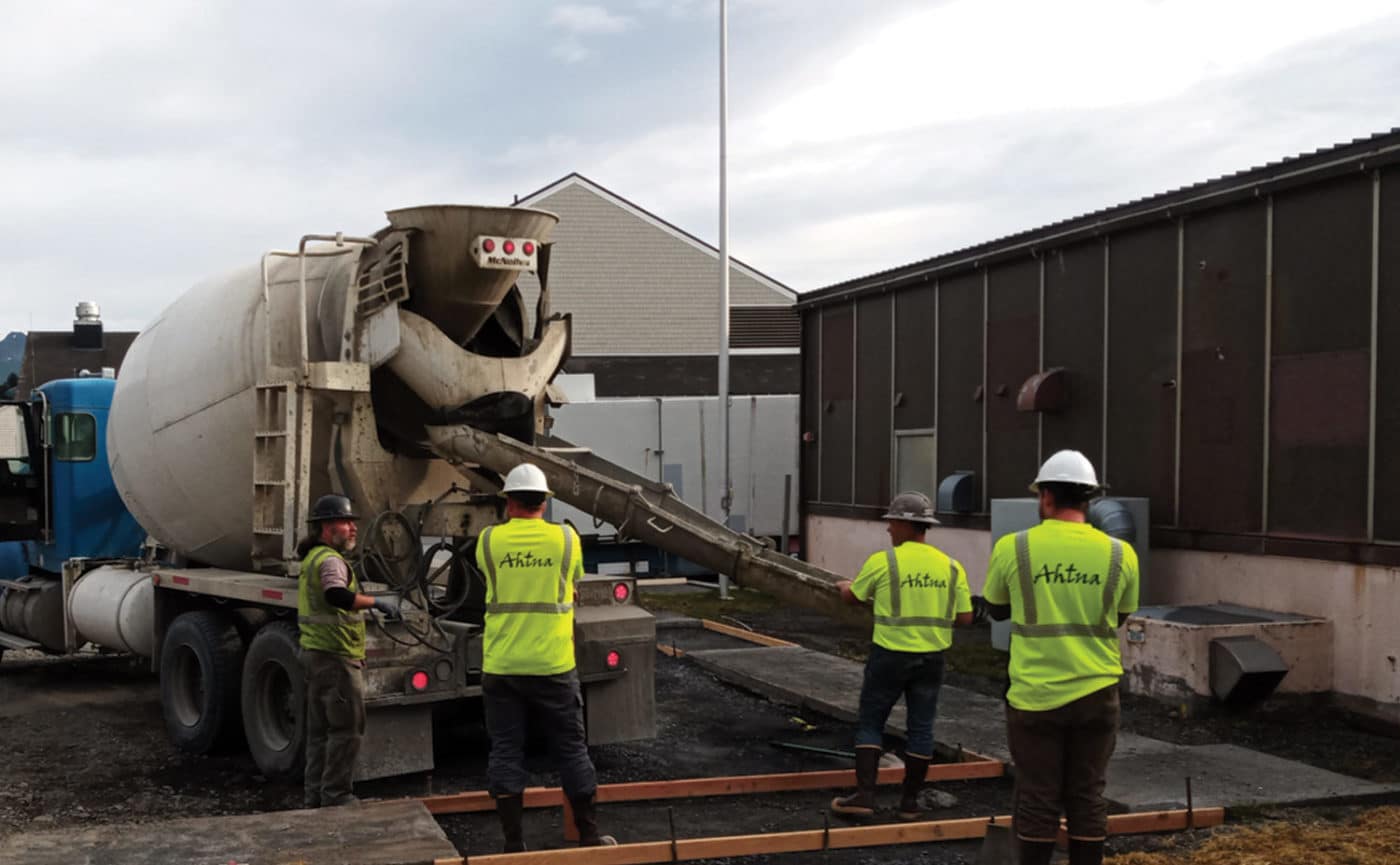By Alexandra Kay – Article excerpt courtesy Alaska Business. To read the full article visit:
https://digital.akbizmag.com/issue/september-2021/anc-construction/.

As Alaska Native regional, village, and urban corporations have grown and expanded since the early ‘70s, many have taken advantage of traditional knowledge of their lands to build a knowledge base that informs their endeavors across many industries. Particularly for construction projects, the ability of Alaska Native corporations to find local, quality workers and their long history with Alaska’s weather and terrain allows them to successfully complete projects that other companies may not know exactly how to begin.
Additionally, Alaska Native corporations can find efficiencies by leveraging their lands—through quarries or other natural resources—to help project owners get projects done on time and on budget.
Ahtna Environmental
A subsidiary of Ahtna Incorporated, Ahtna Environmental specializes in projects with complex logistics and site conditions. One such project was the Atka Health Clinic design and construction. Atka, a city on a small Aleutian Island of the same name, had a population of just 61 at the 2010 Census, and its residents needed a healthcare provider.
While the original design/build bid took place in September of 2019, the 4,500-square-foot design came in at double Atka’s available funding, so the city canceled the project. Determined to get Atka the clinic it needed, the design/build team of Ahtna Environmental, NorthForm Architecture, and PDC Engineers reached out to the city numerous times in order to come up with a plan that would fit its budget.
Working in good faith for more than a year, the design/build team was able to modify the project enough for it to come in within Atka’s $2.6 million baseline budget amount. The modification was a switch to a modular building rather than a stick-built structure, which reduces costs and better accommodates Alaska’s short construction season and the freight schedule in and out of the remote island.
Completed at the end of July, the project certainly took advantage of Ahtna Engineering’s expertise with complex logistics. Before construction began, the design/build team had to come up with a plan for placing the modular components of the building. While these would normally have been placed with a crane, doing this on Atka would have been prohibitively expensive because the crane that would only have been needed for two weeks would have sat on the island for eight to nine months due to shipping schedules.
Knowing they needed to be innovative, the Ahtna Engineering design/build team camp up with a plan to use a 988 loader to set the modular buildings in place. “We then worked with Coastal Transportation out of Seattle, who agreed to build a special ramp for the project capable of loading and off-loading heavy equipment in remote Alaska locations as long as we used them for shipping all project supplies,” says Ahtna Environmental’s Senior Program Manager Michael Selhay. A win/win for both companies, it provided Ahtna Environmental with a way to make equipment do more work and opened a new market for Coastal Transportation.
Another challenge was remining 3,000 yards of classified fill for the building site. Ahtna was told the fill was mined and available but discovered it hadn’t been mined correctly for use, so the design/build team worked hand-in-hand with the city of Atka in order to remine the fill and minimize monetary damages to the city.
This year Ahtna Environmental also completed the replacement of a jet fuel pipeline at US Coast Guard Base Kodiak Site 3. A major shore installation of the Coast Guard, Base Kodiak sits on Kodiak Island about 250 miles southwest of Anchorage. In a 2018 project, Ahtna excavated and replaced the contaminated soil around a fuel pipeline that had been temporarily repaired more than a decade ago. Then in September 2020, the company was awarded the contract to replace the more than thirty-year-old fuel pipeline because of an EPA requirement.
Field work began on May 1, 2021 and required coordination between the EPA, the Alaska Department of Environmental Conservation, the Coast Guard, and Ahtna Environmental—as well as several subcontractors and consultants. “What could have been problematic with so many players actually went very smoothly,” says Ahtna Senior Project Manager Justin Dunn. “High traffic patterns on base were problematic, but Ahtna solved the issue by turning the replacement into a phased program in order to allow for traffic access.”
The project included the replacement of the fuel pipeline as well as paving and work in the fuel pump buildings on holding tanks and fuel pump systems. Ahtna Senior BD/Marketing Group Manager Lori Kropidlowski attributes the smoothness and success of the project to the great communication skills of all involved parties.
